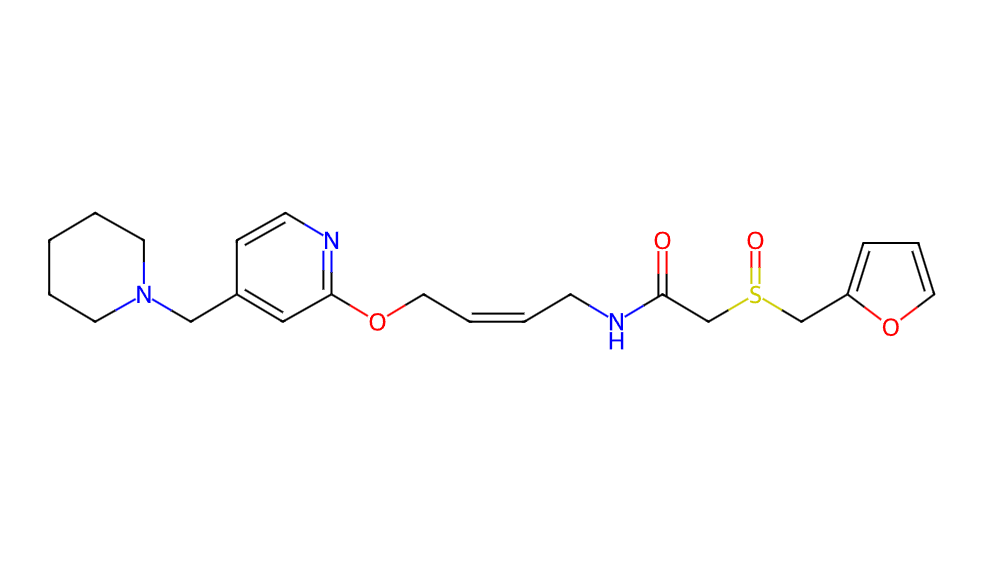- Synthetic anti-infective drugs
- Medications for the digestive system
- Antipyretic and analgesic drugs
- Medications for the blood system
- Medications for the respiratory system
- Anti-allergic drugs
- Medications for the urinary system
- Diagnostic medications
- Immunosuppressive and immunomodulatory drugs
- Vitamins and mineral supplements
- Antioxidants and medications for osteoporosis
- Antiparasitic drugs
- Ophthalmic medications
- Amino acids and their derivatives
- Dermatological medications
- Medications for the circulatory system
- Antitumor drugs
- Medications for the nervous system
- Hormonal and endocrine function-regulating drugs
- Antibiotics
- Others
CAS NO.: 118288-08-7




Basic Information
Chinese Name: 拉呋替丁
English Name: Lafutidine
CAS Number: 118288-08-7
Molecular Formula: C22H29N3O4S
Molecular Weight: 431.548 (also reported as 431.55, slight differences may be due to calculation precision)
Density: 1.3±0.1 g/cm³ (also reported as 1.252 g/cm³, may vary depending on measurement conditions)
Boiling Point: 704.2±60.0 °C at 760 mmHg
Melting Point: 99 °C
Flash Point: 379.7±32.9 °C
Physical and Chemical Properties
Solubility: Soluble in dimethylformamide (DMF), glacial acetic acid; soluble in methanol; practically insoluble in water; very slightly soluble in ether
Vapor Pressure: 0.0±2.2 mmHg at 25°C (also reported as 1.12E-19 mmHg at 25°C, significant differences may be due to measurement conditions)
Refractive Index: 1.599 (also reported as 1.598)
Uses and Pharmacological Effects
Uses: Lafutidine is a potent and long-acting second-generation histamine H2 receptor antagonist with unique gastric protective effects. It is primarily used in the treatment of gastric ulcers, duodenal ulcers, and acute or chronic gastritis.
Pharmacological Effects: Lafutidine significantly inhibits gastric acid secretion, responding to stimuli such as histamine, gastrin, and food. Additionally, it exhibits gastric mucosa protective effects, inhibiting the formation of ulcers in various experimental animal ulcer models in a dose-dependent manner, promoting ulcer healing, alleviating symptoms, and preventing ulcer recurrence.
Toxicity and Safety
Acute Toxicity: Studies on rodents (such as rats and mice) have shown that the median lethal dose (LD50) of Lafutidine varies depending on the route of exposure. For example, the oral LD50 in rats is 1248 mg/kg, while in mice, it is 1034 mg/kg. The intravenous LD50 in rats is 84 mg/kg.
Toxic Effects: Observed toxic effects include behavioral changes (such as altered sleep patterns, convulsions, or changes in convulsion thresholds), alterations in salivary gland structure and function, respiratory depression, among others.

Tai Yau Street, San Po Kong, Kowloon, Hong Kong, China.



